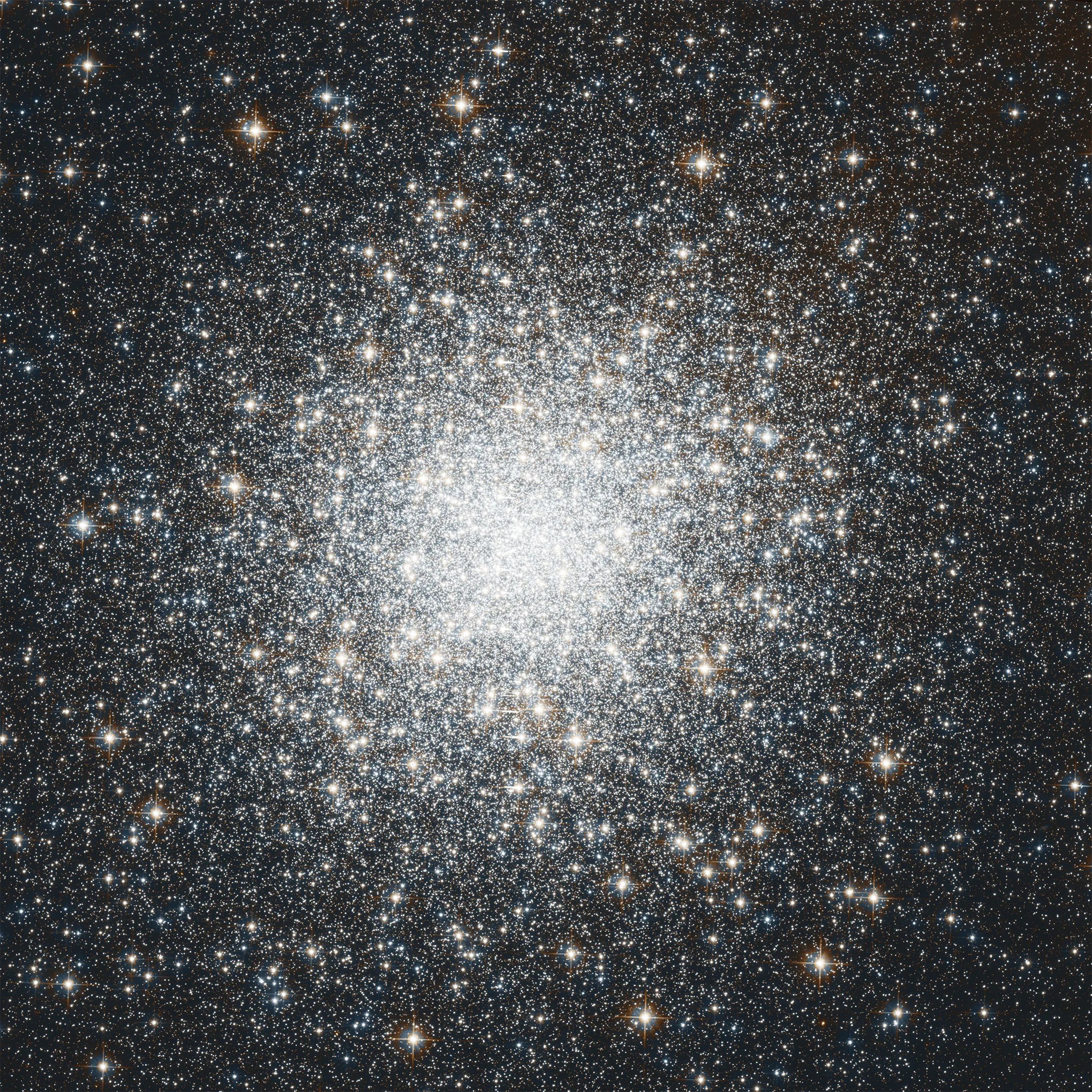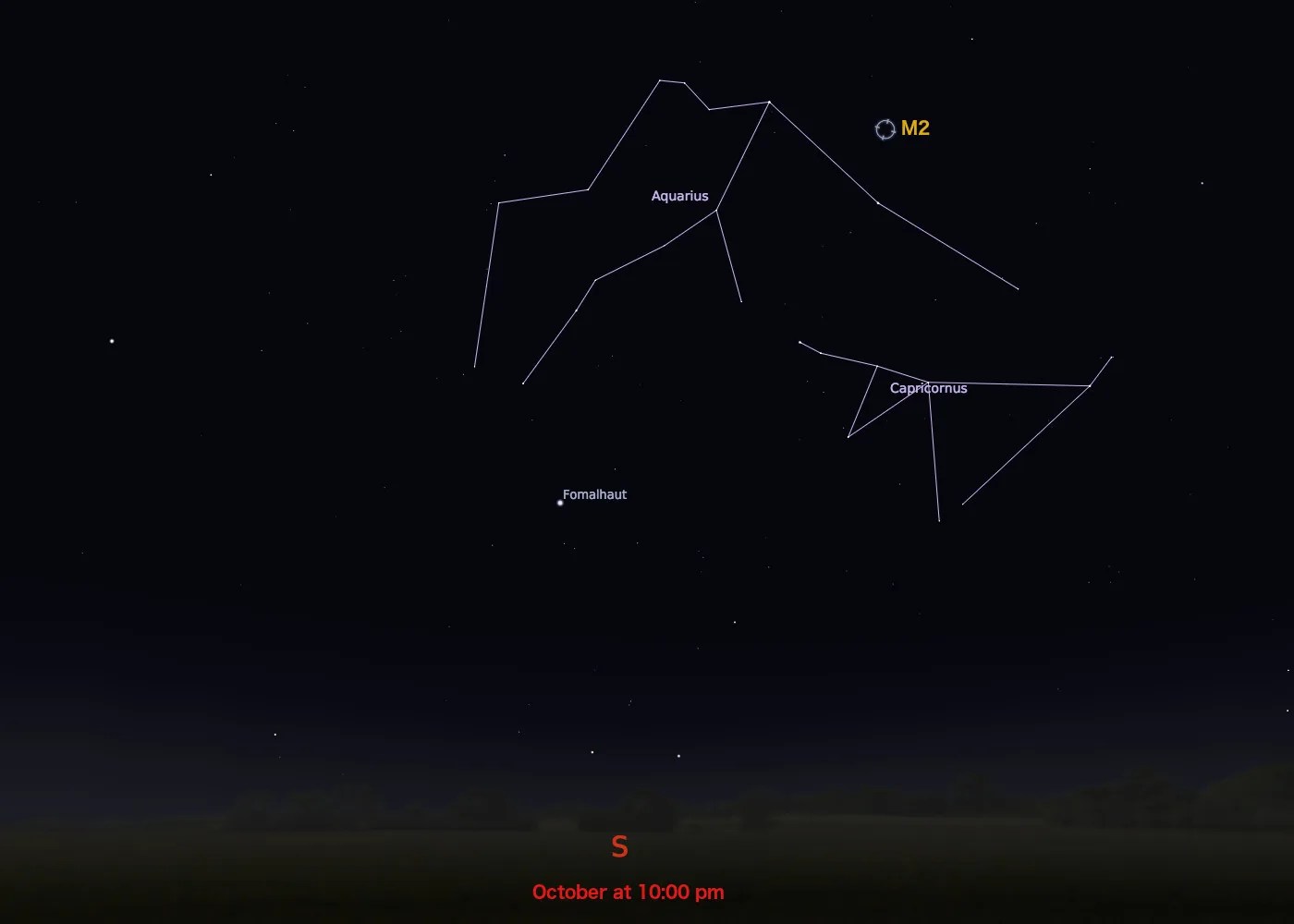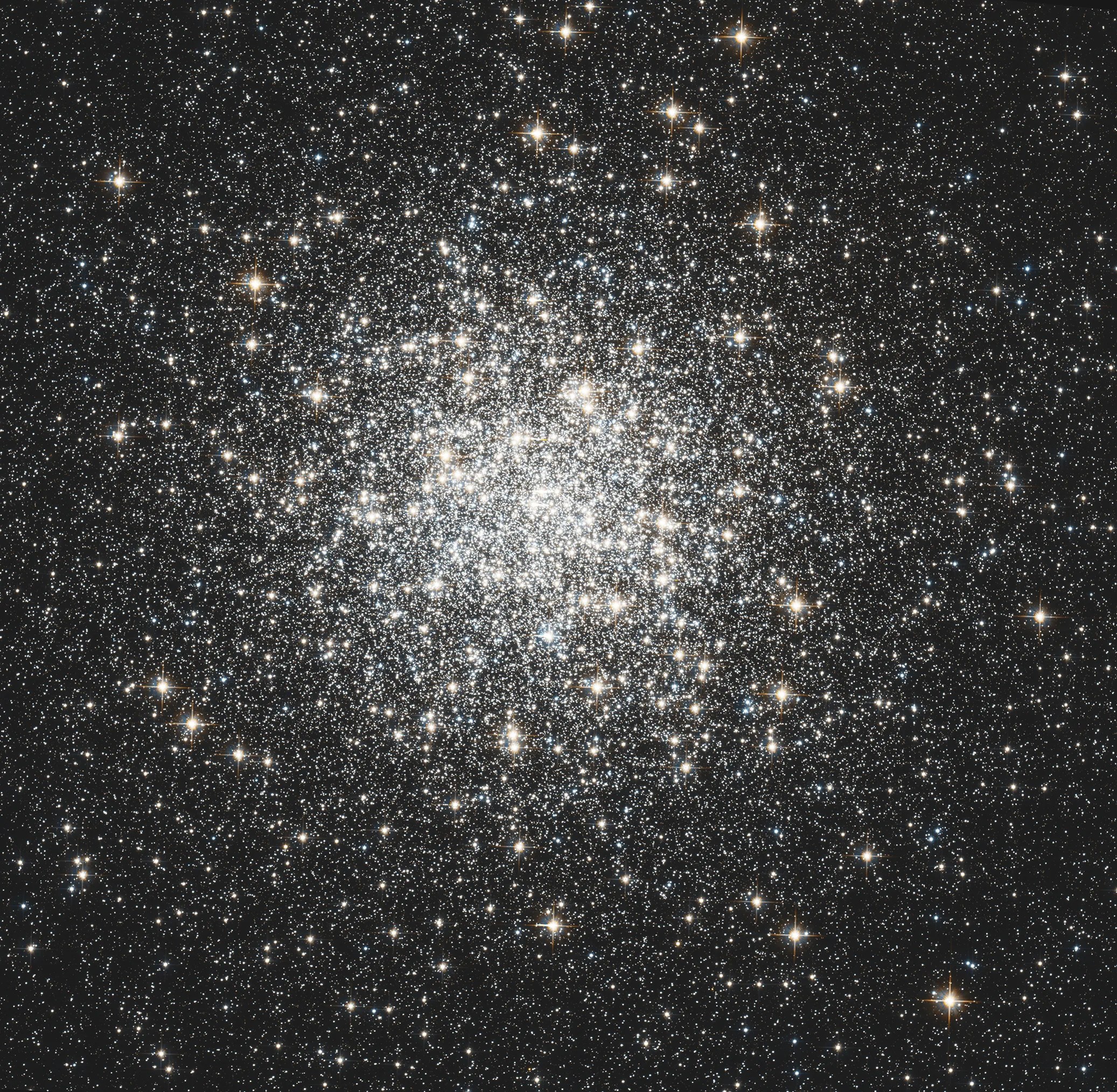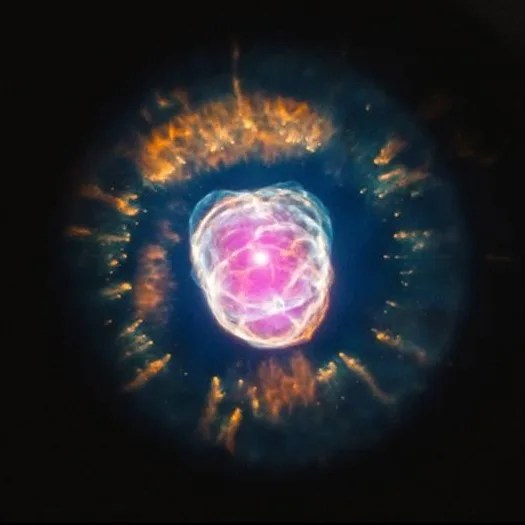Messier 2
Hubble's image of Messier 2 is comprised of visible and infrared wavelengths of light.
Distance
37,000 light-years
Apparent Magnitude
6.3
constellation
Aquarius
object type
Globular Cluster

The first globular cluster to be added to the Messier catalog, M2 is located roughly 37,000 light-years from Earth in the constellation Aquarius. A globular cluster is a spherical group of stars that are bound together by their mutual gravitational attraction. M2 has a diameter of over 150 light-years and is one of the largest clusters of its kind. It was discovered in 1746 by the French astronomer Jean-Dominique Maraldi while he was observing a comet.
Most of the cluster’s mass is concentrated at its center, with shimmering streams of stars extending outward into space. It has an apparent magnitude of 6.3 and can be seen with the naked eye in ideal viewing conditions. The best time to observe M2 is during the month of October. Large telescopes will resolve the cluster’s individual stars.
For more information about Hubble's observations of M2, see:


Explore Hubble's Messier Catalog
The following pages contain some of Hubble’s best images of Messier objects.

Messier 1 (The Crab Nebula)
Better known as the Crab Nebula, Charles Messier originally mistook Messier 1 for Halley’s Comet, which inspired him to create…

Messier 3
Messier 3 holds more than 500,000 stars.




